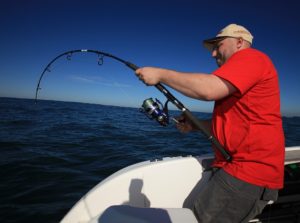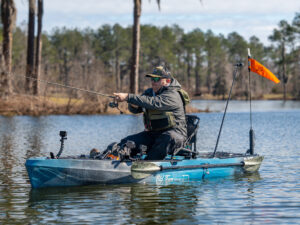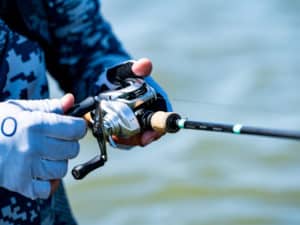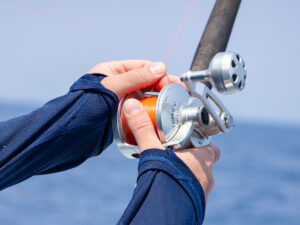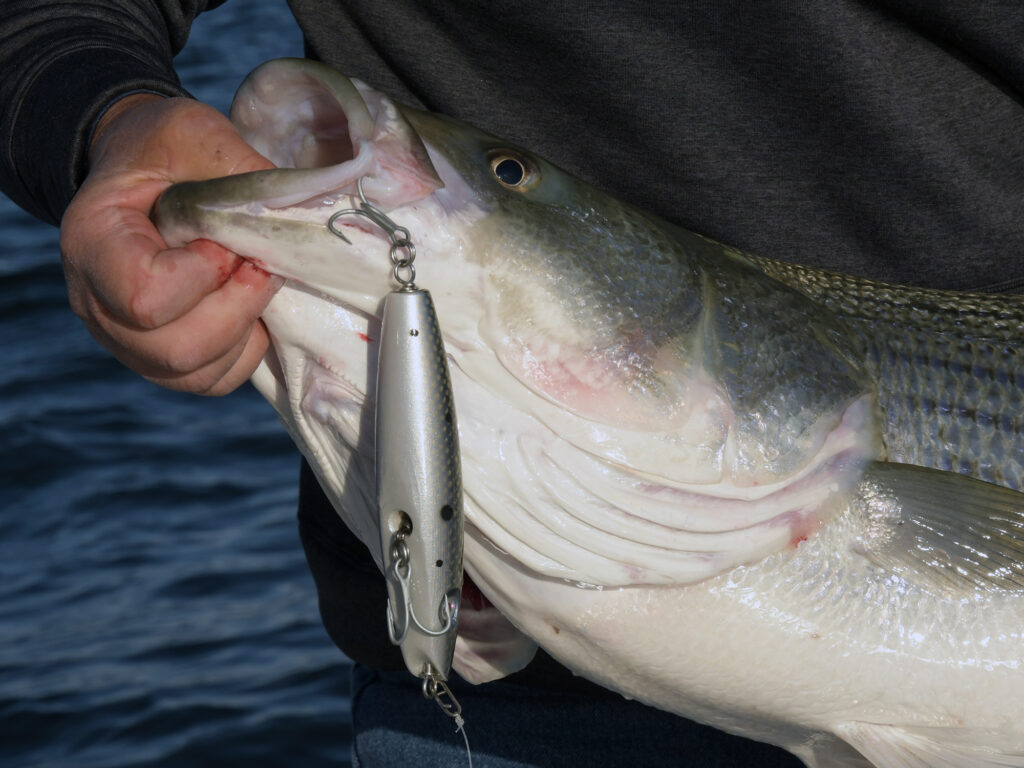
Any striper fisherman worth his salt knows wood plugs are deadly. The classics like the Danny, Surfster, Pencil and Polaris Poppers — to name just a few — have been catching striped bass from the beach and boats for longer than most of us have been around. They are just as effective today as ever before. But because they are often hand-crafted, the available plugs vary in quality, performance and durability. Lure makers who have tried building them at a production level often fail.
Testing OutCast Lures for Stripers
Some of the best striper plugs I’ve used were small-batch plugs made by individual artists. A few have been great, the others somewhere between mediocre and disappointing, especially when you factor in the cost. So, I was pleasantly surprised when I opened a package left in my mailbox containing three prime examples of wooden-plug-making excellence from OutCast Lures. They came with the understanding that they were mine to fish and report on. Included in the package were one each of its Pencil Popper, Hybrid Popper and Surfster models. All three looked great and felt right, so I was stoked to try them.
On my first day out with the Pencil and Hybrid lures, both quickly proved their worth. I took a 40-pound striped bass on the Pencil during a short surface blitz and several more fish on the Hybrid. The Hybrid Popper swam enticingly with very little rod input. Both cast a mile with little effort. A few days later, casting the Surfster in the Wonder Bread pattern (one of my favorite colors), I enticed two nice bass while fishing around bunker pods. These are quality plugs offered at a very fair price considering the handwork that goes into each one.
How A Lure Company Was Born
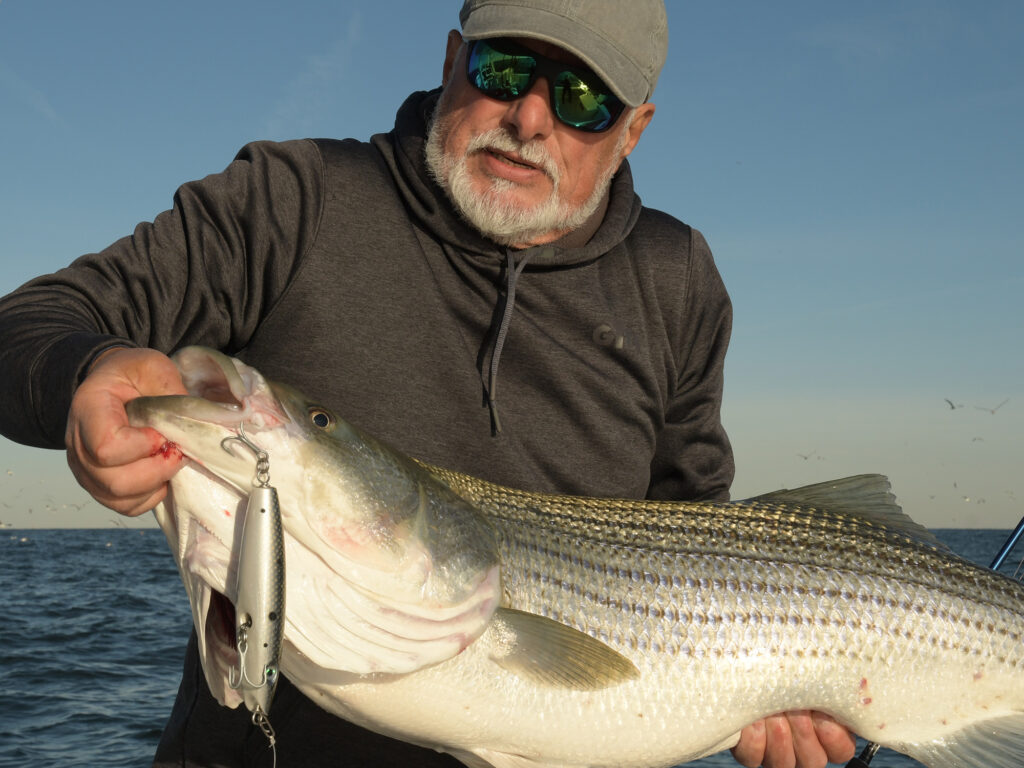
OutCast Lures grew out of the efforts of one avid New England surfcaster, and his disappointment with the quality of wood plugs that were available to him. Mike Pham was tired of fishing with plugs made from inferior wood with weak hardware, poorly thought-out color schemes, and unattractive swimming motions. It all sounded familiar to me, but Mike actually did something about it. He started creating his own plugs and experimenting. He sourced prime wood, hitting on Alaskan cedar with its dense grain and ideal buoyancy. He added weights to the tail, so his plugs cast farther than others, and finished them with the quality components, paints, patterns and epoxies.
He started with several of the most popular classic designs and made them available in limited quantities. His lures soon gained a solid reputation among New England’s hardcore anglers. His tinkering produced a solution for line tangles that often occur when casting large swimmers. By adding a magnet in the belly of his plugs, the front hook holds tight to the body. It’s called “MagNeat” and comes standard on Surfster and Danny models.
Keeping Quality While Increasing Production
The next step in the Outcast journey was to find a way to increase production without sacrificing quality and consistency. That came with enthusiastic partners and the delegation of responsibilities. Mike Holmes bought into OutCast and took over as wood shop director. Jeff Adams assumed the business development, marketing and sales manager roles. Founder Mike Pham still remains hands-on with design, paint and new plug development. The trio ramped up production to the point that two dozen tackle dealers from Maine to Maryland now stock OutCast Lures. Web sales provide even more opportunity.
True to their goal, the plugs I inspected and fished were as good as the best wood plugs I own. I will be adding more to my tackle bag in the future. They currently offer seven models in several sizes and 14 colors to match herring, bunker, mackerel and squid. And they catch more than just stripers. Jeff Adams mentioned they have some new designs under development, so I’ll definitely be on the lookout for future models.

